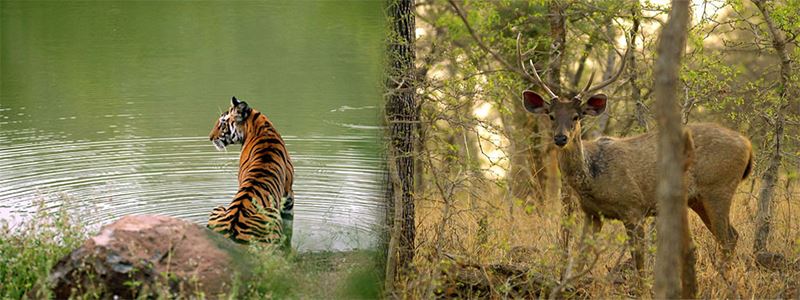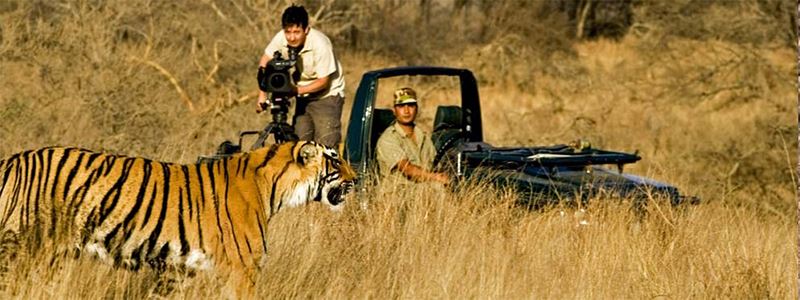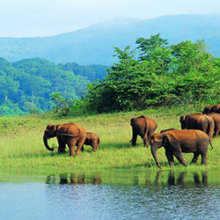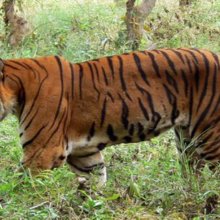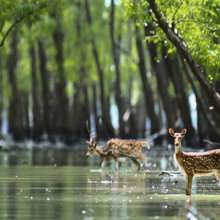Story behind the increase in big cat count in Panna Tiger Reserve
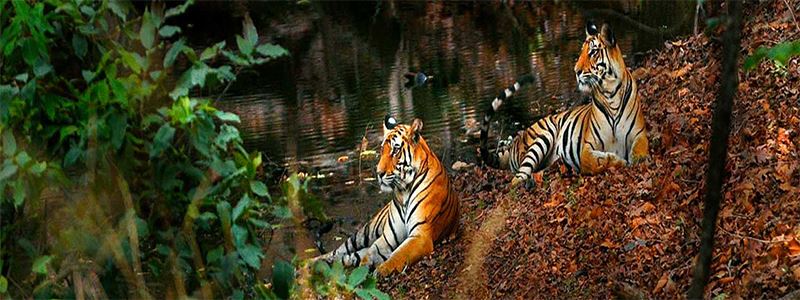
by Indiator
About
Being a famous place in Madhya Pradesh, the Panna Tiger reserve is located in Panna and Chattarpur district. It is the 22nd Tiger Reserve of India and holds 5th position in Madhya Pradesh. This tiger reserve covers an area of 542.67 sq. km.
The Ministry of tourism of India declared Panna Tiger Reserve as one of the best maintained and managed national parks of the country. It was also awarded the Award of Excellence in the year 2007. Established in the year 1981, the Panna Tiger Reserve includes some parts of the Gangau Wildlife Sanctuary.
Wildlife in Panna Tiger Reserve
Panna Tiger Reserve is an abode to the royal tigers, the king of jungles. Besides the Tigers, it is also a home to miscellaneous wildlife creatures such as Leopards, Wild Dogs, Wolfs and other smaller cats.
It also includes 200 migratory bird species such as the White Necked Stork, the King Vulture, the Blossom Headed Parakeet and much more.
One can also find a variety of snakes and reptiles. Panna tiger reserve has a place where natural rock formation occurs. This is the place where tigers mate.
Safari and their timings
Madla and Hinouta are two of the entry zones for the Panna Tiger Reserve. Every year from 16th October to 30th June, the reserve remains open.
You can get a safari tour with the jeep facilities and enjoy the dense ambience of the reserve. Boat rides are also available so that you can get a sight of the aquatic creatures present around the lake.
To get the complete visualization of the Panna creatures, Elephant safari is also available. This facility helps you to get the natural high definition mode of the creatures.
Besides all these, a night safari facility is also available which offers the most adventurous experience in Panna. The reserve also Initiate several Nature camps for local kids so that they get acquainted with the habitat.
During the winter season, that is, from October to February, the park timings are from sunrise to 11 a.m. in the morning and from 3 p.m. to sunset in the afternoon.
Whereas during the summer season, that is, from March to June, the morning timings are same and the afternoon timings are from 4 p.m. to sunset. The best period to visit the Panna Tiger Reserve is from December to March.
How does Panna lose all of its tigers?
During the year 2009, Panna Tiger Reserve observed a scary fall in the number of Tigers residing in Panna. Up until the year 2006, it was estimated that Panna holds 24 Tigers but after the study but Wildlife Institute of India, it was noticed that only single male tiger was left in the forests of Madhya Pradesh.
Some of the tigers have been poisoned by the local villagers because the big cats have killed their cattle whereas some of them have fallen prey to poaching.
Dacoity was also a reason behind the killing of tigers because an evicted encroacher damaged the forest habitat in order to take revenge.
Some of the tigers died a natural death because they had already completed their 15-year lifespan whereas some of them also died due to illness. All these conditions became the reason why Panna lost all of its tigers.
How does Panna have its big cats back?
2006 was the year when the population of the tigers was estimated to be 24. But by 2009 only one male tiger was left that to with no mate.
To increase the tiger count in the Panna tiger reserve, a dedicated field director, and his team decided to take care of the animals in order to protect them. He decided to bring two female tigers, one from Kanha (T1) and the other from Bandhavgarh (T2).
By the time the female tigresses were brought, the male tiger went missing. There were many complexities related to relocation. Relocation is done only after the national tiger conservation authority has approved for it.
Moreover, when an animal is moved from its comfort zone and brought to a place where tigers have not thrived, it may create a risk and stress out the Tigers.
After the two female tigresses were brought, there was a need to relocate a male tiger. This male tiger (T3) was brought from Pench.
What were the problems that were faced?
Coupling among siblings and mothers to mate with their cubs was a common thing between the Tigers. Tigers are often considered as incestuous, for this reason choosing Tigers from the different reserve is recommended.
If they were brought from the same reserve, then chances are that they would be siblings. If inbreeding was done, it would lead to various birth effects and result in weaker genes. This would, in turn, make the tigers more vulnerable to illness.
Now after the three tigresses were relocated, it was the time when two more tigresses were brought to Panna. The abandoned cubs from Kanha were brought in order to increase the chance of mating.
Whenever the forest authorities sense that the tiger has killed the cattle of a village, immediately compensation is offered in order to prevent the village from poisoning the big cat. On April 16, 2010, two Tiger’s T1 and T3 gave birth to four cubs.
This day is celebrated every year by the reserve staffs as a birthday with a cake. Again, on October 2010, when T3 mated with T2, four cubs were delivered.
The Panna Tiger Project was divided into two phases. The first phase, phase 1 had one male tiger brought from Pench and four female tigresses.
The other two, T4 and T5 were also brought from Kanha when they were 15-day old cubs. The second part of the phase, phase 2 was the relocation of T6 to Panna Tiger Reserve.
In Panna Tiger Reserve, one of the essential tasks is to keep a check on the animals. Soon there was a hike in big cat count which tends to attract a lot of tourists to Panna Tiger Reserve.
Suggested Tour Packages
Recommended Posts

Explore The Essence Of Manali
May 9, 2023

Explore the Incredible Jim Corbett National Park
April 5, 2023
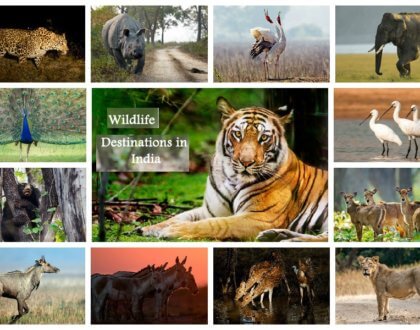
Witness The Flabbergasted Thrill By Experiencing A Wildlife Tour
January 24, 2019

